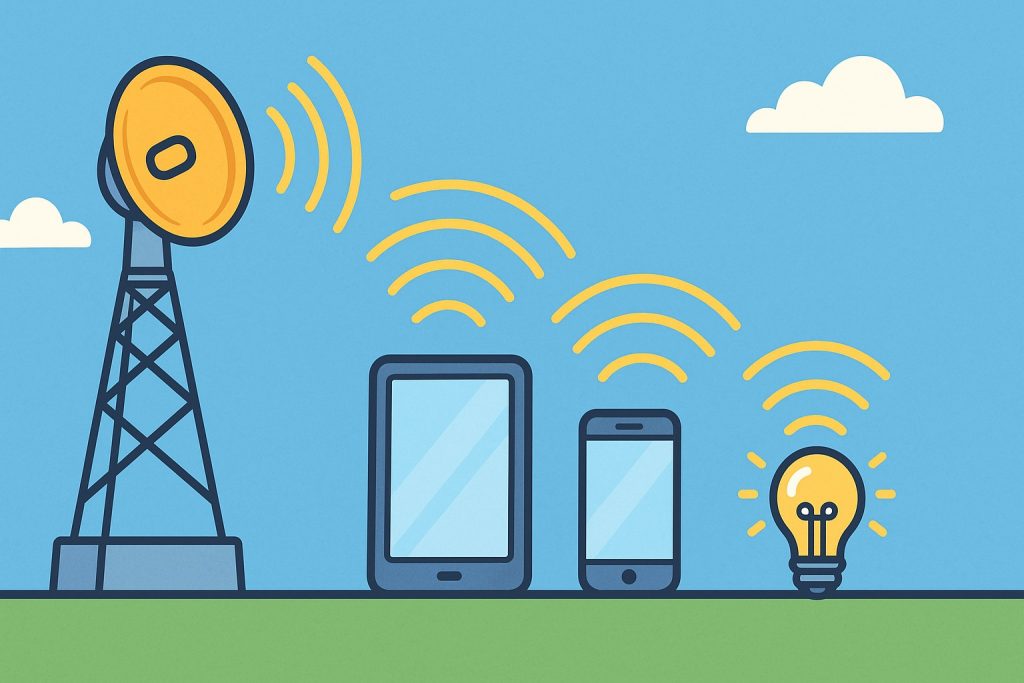Wireless power transmission (WPT) is the process of transferring electrical energy from a power source to a device without using physical connectors or wires. Although it may sound futuristic, the idea dates back to the early 1900s, when Nikola Tesla first experimented with this concept. Today, it is a growing field with real-world applications—from charging smartphones to powering electric vehicles and satellites.
How Does Wireless Power Work?
Wireless power transmission uses electromagnetic fields to move energy between two points. It usually requires:
- A transmitter, which generates the power
- A receiver, which collects the power and converts it into usable electricity
There are several main methods of wireless power transfer:
- Inductive coupling – used in wireless phone chargers and electric toothbrushes
- Resonant inductive coupling – allows power transfer over slightly longer distances
- Microwave transmission – transmits energy using radio or microwave frequencies
- Laser transmission – uses focused light beams to deliver energy across long distances
Nikola Tesla’s Vision
Tesla was a pioneer in wireless energy. His Wardenclyffe Tower was designed to transmit electrical power across the globe using Earth resonance. Although the project was never completed, it laid the theoretical groundwork for modern wireless power systems.
Tesla dreamed of a world where cities, ships, and machines could be powered wirelessly from a central station—an idea still being explored today.
Modern Applications
Wireless power is already being used or tested in many industries:
- Consumer electronics – wireless chargers for phones, headphones, and wearables
- Medical implants – powering devices inside the body without external batteries
- Electric vehicles (EVs) – charging pads embedded in roads or garages
- Space-based solar power – collecting solar energy in orbit and beaming it to Earth
- Drones and robotics – recharging without landing
These innovations offer convenience, safety, and new design possibilities for engineers.
Challenges and Limitations
Despite its potential, wireless energy transmission faces technical and economic hurdles:
- Energy loss during transmission can reduce efficiency
- Range limitations for safe and effective power delivery
- Cost of specialized components and infrastructure
- Safety regulations concerning electromagnetic exposure
Researchers are actively working on improving materials, targeting systems, and frequency tuning to make WPT more practical and widespread.
Glossary
- Wireless power transmission (WPT) – The delivery of electrical energy without physical wires.
- Electromagnetic field – An invisible field of energy created by electric and magnetic forces.
- Inductive coupling – A method where energy is transferred through magnetic fields between coils.
- Microwave transmission – Power transfer using high-frequency electromagnetic waves.
- Earth resonance – Tesla’s theory that the Earth itself could conduct and amplify energy.


